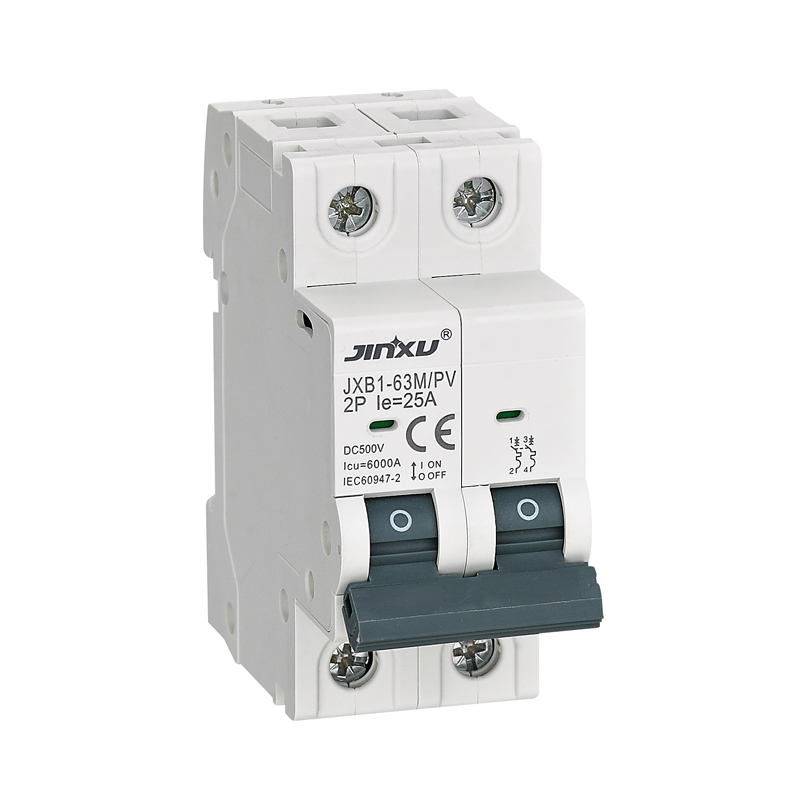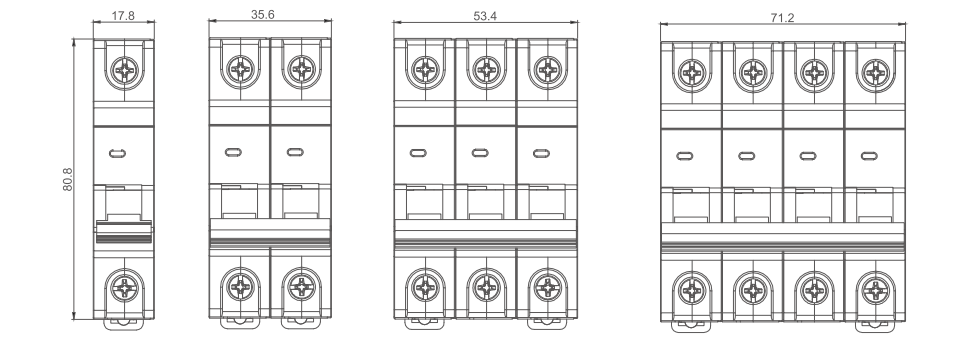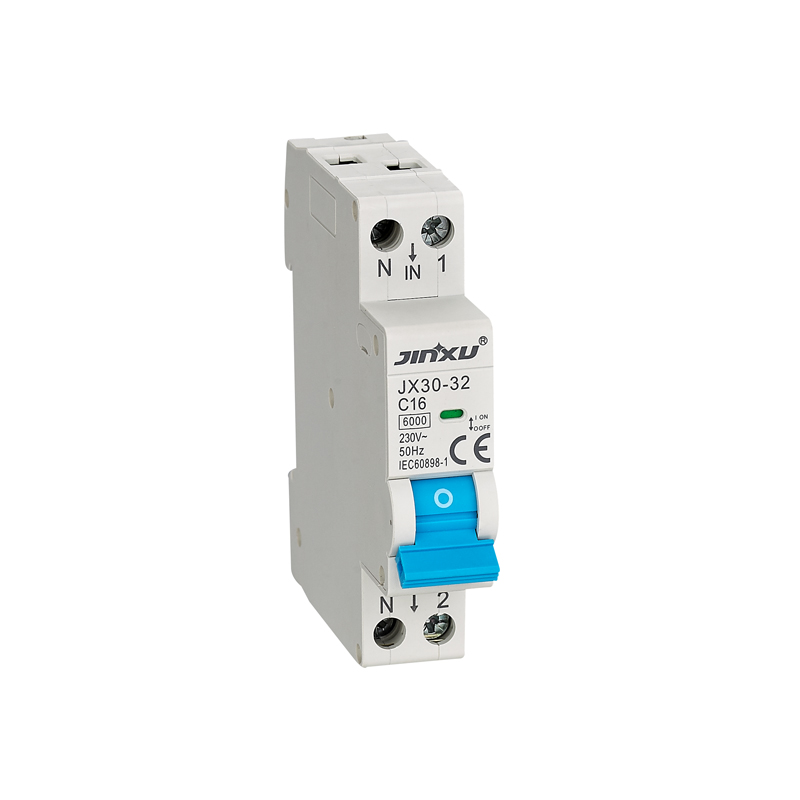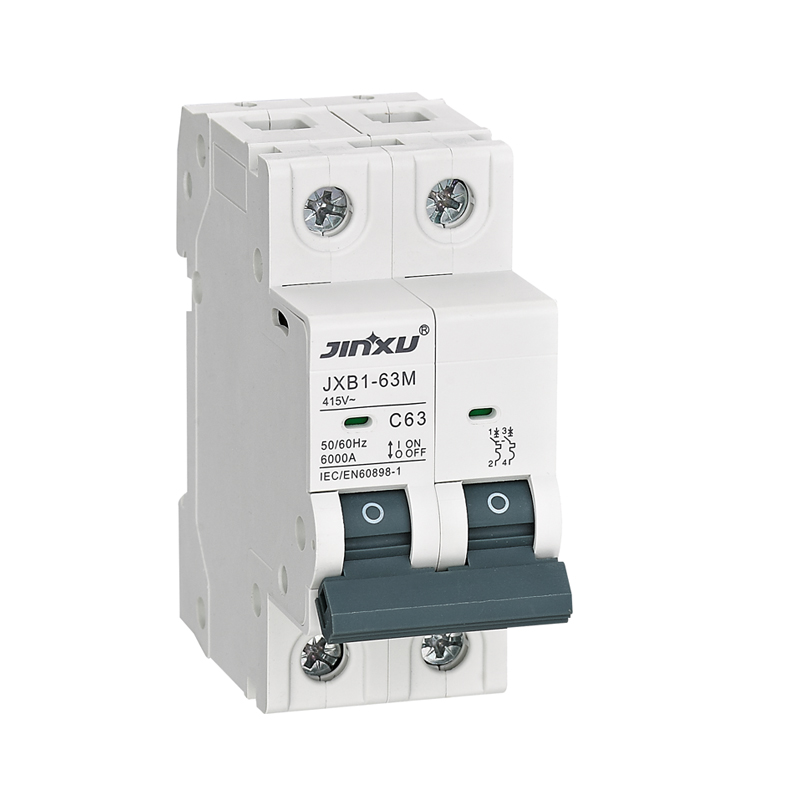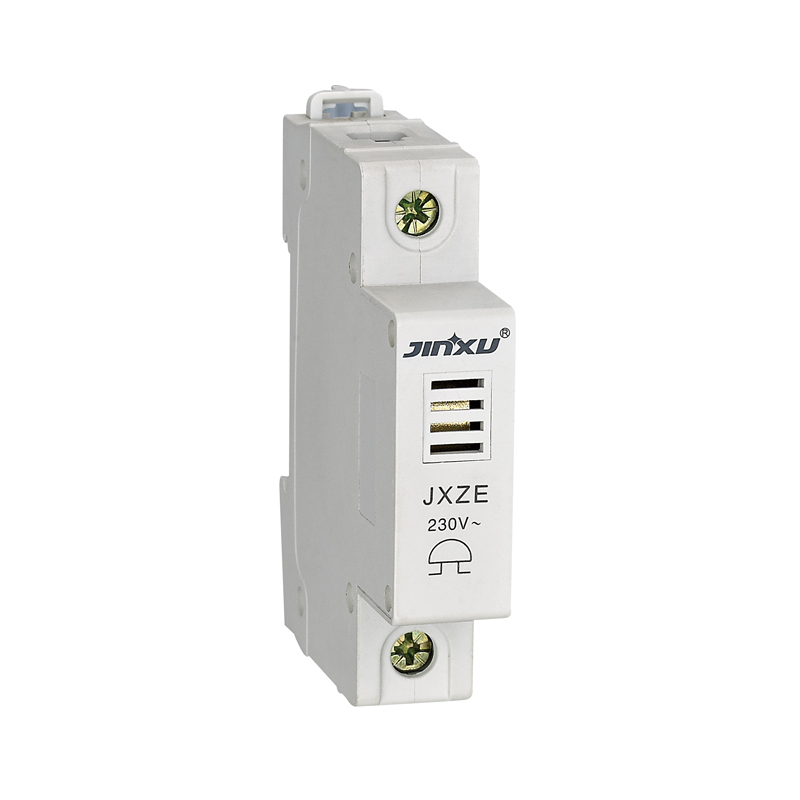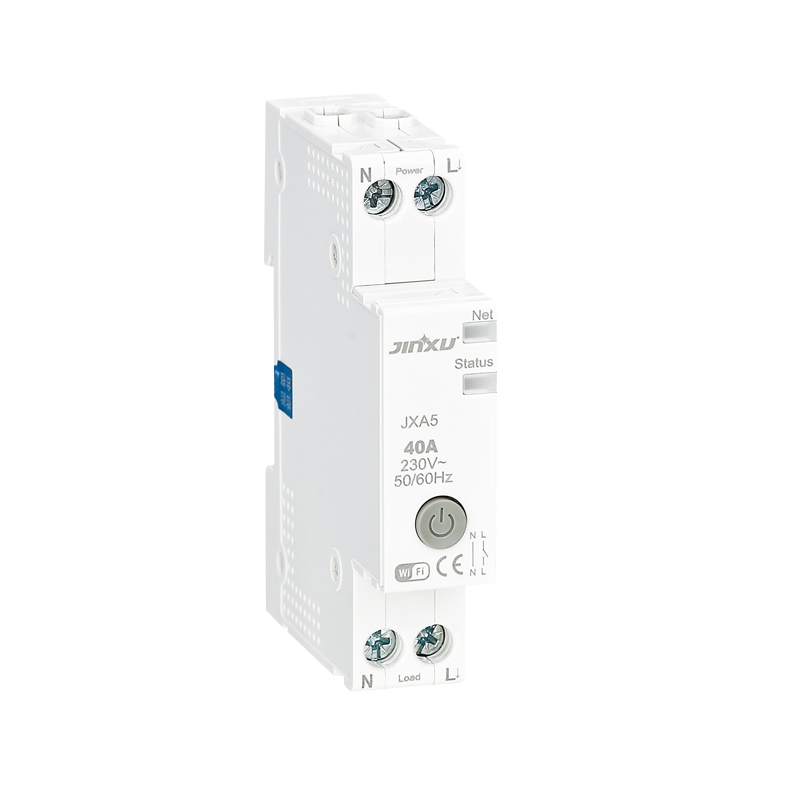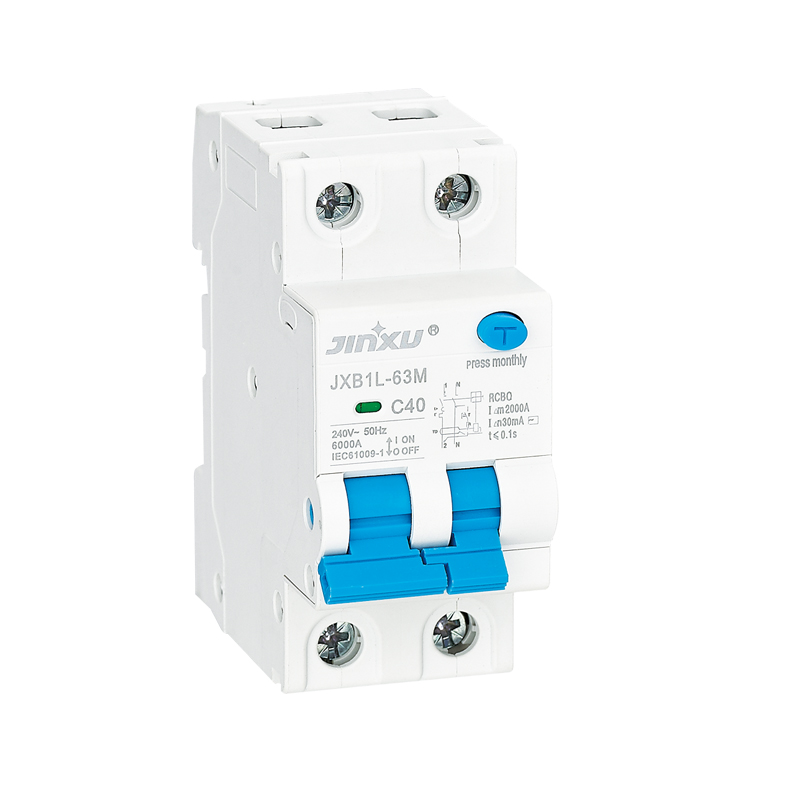Product characteristics
The product can realize non-polar wiring and ensure the safety of the equipment reliably.
Trip characteristics and energy consumption Overcurrent trip characteristics
|
Test
|
Type
|
Test Current
|
Initial State
|
Trip Or Non-trip Time Limit
|
Expected Result
|
Remark |
|
a
|
c
|
1.05In
|
Cold state
|
t≥1h
|
non-trip
|
|
|
b
|
c
|
1.3In
|
mmediately
Carried out
after test a
|
t< 1h
|
trip
|
The current rises steadily to the specified value within 5s |
|
c
|
c
|
7In
|
Cold state
|
t≥0.1s
|
non-trip
|
|
|
d
|
c
|
1In
|
Cold state
|
t< 0.1s
|
trip
|
|
|
Wiring diagram
|
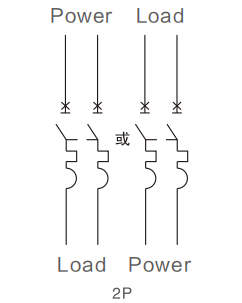
|

|
| Number of poles and width |
2P(36mm) |
4P(72mm) |
| Rated operating voltage Ue (V) |
DC 500 |
DC 1000 |
| Rated current In (A) |
6,10,16,20,25,32,40,50,63 |
| Rated insulation voltage Ui (V) |
1000 |
| Rated impulse withstand voltage Uimp(kV) |
6 |
| Ultimate short-circuit breaking capacity Icu (kA) |
6 |
| Instantaneous trip characteristics |
C |
| Life (cycles) |
Mechanical 20000, electrical 1500 |
| Use environment |
Ambient temperature: -25℃ to 40℃ |
| Accessories available |
Auxiliary contact, alarm contact |
| Wiring capacity |
Flexible cable 25mm2 or less Hard cable 35mm2 or less |
| Meet the standards |
IEC60947-2 GB14048.2 |
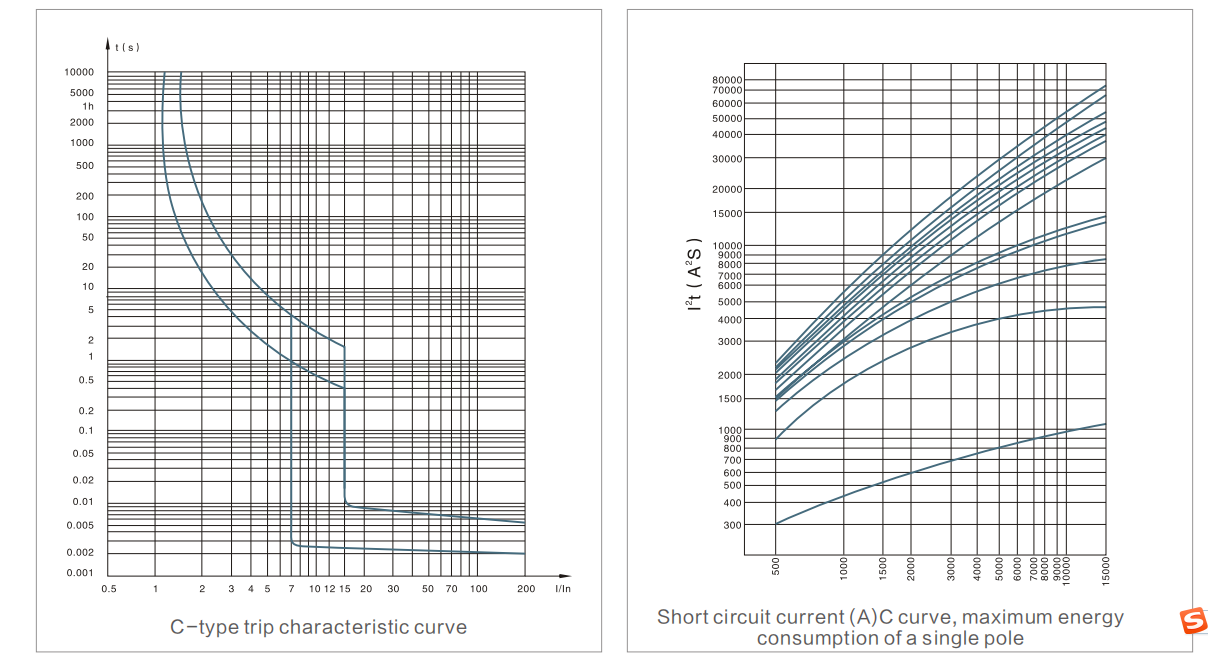
Dimensions and installation instructions
The DC circuit breaker adopts IEC standard guide rail 35mm
Both MCB and MCCB are electrical line protection devices, but they also have some differences.The difference between a molded case circuit breaker and a miniature circuit breaker is that the electrica
[Circuit breaker knowledge] RCCB manufacturer will introduce the difference between the residual current circuit breaker and the residual current operated circuit breaker.


